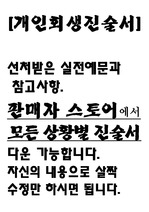장애인 직업평가와 직업재활 서비스의 확충 전망과 과제
*구광역시장애인재활협*
다운로드
장바구니
목차
I. 장애인의 직업과 근로권 보장에 필요한 노력1. 직업평가 서비스의 필요성과 의의
2. 직업평가 서비스의 실용성 측면
3. 직업평가 목적과 기준
II. 직업평가의 성격과 과정
1. 직업평가의 특성과 기능
2. 직업평가 서비스 영역
III. 직업평가관련 자격증 인증과정과 직업평가사의 기능
1. CCWAVES와 전문 직업평가사
2. 장애인 중심의 평가
IV. 직업평가 서비스의 발전 과정
1. 초기 단계
2. 1970년대와 1980년대
3. 1990년대와 그 이후
V. 앞으로 해야 할 과제와 전망
1. 중증장애인과 직업평가
2. 독립생활 재활과 특수학교에서의 직업평가
3. 역량강화
VI. 결론
본문내용
Ⅰ. 장애인의 직업과 근로권 보장에 필요한 노력성인 724명에 대한 최근 하버드대학의 1938년부터 79년간 추적연구 결과에 따르면 인간관계가 좋은 사람이 상대적으로 장수하는 것으로 발표하였다(http://m.news.naver.com/ rankingRead.nhn?oid=021&aid= 0002331968 &sid1= 103&ntype=RANKING). 단일 주 제에 대한 세계 최장의 기록을 세운 이 종단적 연구는 사람의 삶을 가장 좋게 만드는 것이 인간관계인 반면, 외로움은 죽음에 이르게 한다고 밝혔다. 조직생 활이나 결혼생활 속에서도 외로움을 경험할 수 있다고 전제하면서 친구의 숫 자보다도 친밀도의 중요성을 강조하고 인간관계가 좋은 사람은 신체적으로 건 강할 뿐만 아니라, 기억력까지 증진되는 것으로 밝히면서 외로움을‘삶의 독’ 으로 표현하고 있다. 이런 맥락에서 살펴보아도 중증의 장애를 지닌 시민들은 시설에 거주하기를 원하지 않고 자신이 물리적으로 속한 지역사회 속에서 살 아가기를 희망하며 현재 탈시설화 운동을 펼치고 있음을 알 수 있다.
성인생활의 대부분을 차지하는 직업은 장애인에게 있어서 건강유지와 증진 의 수단인 동시에 소득 등 사회참여에 있어서 필요 불가결한 요소가 된다. 이 를 증명하듯 1987년 10월에 개정된 대한민국 헌법 전문은 정치와 경제, 사회, 그리고 문화의 모든 영역에 있어서 개인의 기회를 균등히 하고 능력을 최고도 로 발휘하게 하여 자유와 권리에 따르는 책임과 의무를 완수하도록 한다고 천 명하고 있다. 나아가 제11조는 경제적 차별의 금지, 제15조는 직업선택의 자유 를 규정하여 이를 통해 모든 국민의 물질적 자원의 획득 및 권리를 보장하도 록 하고 있다. 특히 헌법 제32조에서 국가는 근로자의 고용을 증진시키는 의 무를 다하도록 규정하고 있어 고용을 통한 장애인의 근로권은 헌법적 권리로 자리매김한다.
참고 자료
유병주, 이달엽 (1996). 지원고용에서의 직업평가. 직업재활연구, 6, 79-95. 이달엽 (1995a). 내담자 및 그 주변정보에 대한 재활상담가의 지각연구. 사회복지개발연구, 1(1), 46-58.
이달엽 (1995b). 직업평가정보의 유형 및 충분성에 관한 일 연구. 한국사회복 지학회 춘계학술대회 자료집, pp. 62-75.
이달엽 (1997a). 직업평가사 양성방안에 관한 연구. 재활복지 Rehabilitation Research, 12(1), 1-23.
이달엽 (1997b). 재활과학론. 서울: 형설출판사.
이달엽 (1997c). 장애인 직업재활의 전문화와 전문인력의 확보. 장애인 고용, 26, 64-75.
이달엽 (2001a). 그림 흥미검사의 구성타당도와 예비척도에 관한 연구. 직업재 활연구, 11(2), 69-96.
이달엽 (2001b). 그림 흥미검사의 구성개념에 대한 타당도 검증, 사회복지개발 연구, 8(1), 31-57.
이달엽 (2003, the 3rd ed.). 재활과학론, 서울: 형설출판사. 이달엽 (2008). 재활과학론, 서울: 형설출판사.
최성규 (1998). 우리나라 특수교육 학회지에 나타난 연구 현황분석과 질적 연 구방법의 패러다임변화. 특수교육연구, 21, 23-45.
Adami, H., & Neubert, D. (1991). A follow-up vocational assessment recommendations and placement in secondary vocational education programs for students with disabilities. Vocational Evaluation and Work Adjustment Bulletin,24(3), 101-107.
Becker, R. L., Schull, C., & Cambell, K. (1981). Vocational interest evaluation of TMR adults. AmericanJournal ofmental Deficiency, 85(4), 350-356.
Coffey, D.D., Hanson, G.M., Menz, F.E., & Coker, C.C. (1978). Vocational evaluator role and function as perceived by practitioners and educators. Wisconsin, Stout: Stout Vocational Rehabilitation Institute.
Corthell, D.W., & Griswold, P.P. (1987). The use of vocational evaluation in VR. Stout, Wisconsin: Stout Vocational Rehabilitation Institute.
Costa, D. T., McCrae, R. R., & Holland, J. L. (1984). Personality and vocational interests in an adult sample. JournalofAppliedPsychology,69, 390-400.
Dowd, E.T., & Wallbrown, F. (1993). Motivational components of client reactance.
Journal ofCounseling andDevelopment, 71(5), 533-538.
Herbert, J. T., & Menz, F. E. (1981). Reactions to research on therapeutic effects of vocational evaluation: A selective review of the problems and alternatives. Vocational Evaluation and Work Adjustment Bulletin, 14(3), 100-108.
http://m.news.naver.com/rankingRead.nhn?oid=021&aid=0002331968&sid1=103&nt ype=RANKING
Lee, D. Y. & Park, S. D. (2000). Assessment in the field of rehabilitation counseling. Journal of Vocational Rehabilitation, 10(2), 123-149.
Lee, D. Y., Taylor, D. W., & Rubin, S. E. (1994). Rehabilitation counselors' perceived value of vocational evaluation information. Vocational Evaluation and Work Adjustment Bulletin, 27(2), 33-37.
Mades. B. J. (1986). The field of vocational evaluation: A student's perspective.
Vocational Evaluation and Work Adjustment Bulletin, 19(1), 29-32.
Manzi, P. A. (1987). Skills assessment in career counseling: A developmental approach. The Career Development Quarterly, 36(1), 45-54.
Menchetti, B. M., & Flynn, C. C. (1990). Vocational evaluation. In F. Rusch (Ed.), Supported employment: Models, methods, and issues (pp. 65-81). Sycamore, IL: Sycamore Publishing.
Menz, F. E. (1983). Need for theory in Facility program evaluation. Journal of the Organization of Rehabilitation Evaluators, 3(1), 1-13.
Moon, M., Inge, K., Wehman, P., Brooke, V., & Barcus, J. M. (1990). Helping persons with severe handicapped get and keep employment: Supported employment strategies and outcomes. Baltimore: Paul H Brookes Publishing Co.
Nosek, M. (1987). Independent living rehabilitation, in S. E. Rubin, & R. T. Roessler (3rd eds.), Foundations of the vocational rehabilitation process (pp. 273-290). Austin-Texas: Pro-ed.
Perlman, L. G. & Kirk, F. S. (1991). Key disability and rehabilitation legislation.
Journal of Applied Rehabilitation Counseling, 22(3), 21-27.
Peters, R. H. (2002). The current state of vocational rehabilitation counseling and the use of vocational evaluation. 직업평가국제워크샵자료집, pp. 1-17. 대구: 대구장애인종합복지관.
Power, P. W. (1991). A guide to vocational assessment (2nd ed.). Austin, Texas: Pro-ed.
Pruitt, W. A. (1970). Basic assumptions underlying work sample theory.
Vocational Evaluation and Work Adjustment Bulletin, 3(1), 24-26. Pruitt, W. A. (1986). Vocational evaluation(2nd ed.). Menomonie, WI: Walt
Pruitt Associates.
Roessler, R. T., & Rubin, S. E. (1982). Case management and rehabilitation counseling: Procedures and techniques. Austin-Texas: Pro-ed.
Shanahan, K. L. (1993). Vocational assessment of persons with severe and profound disabilities: What's really being done? In R. Fry & W. Carner (Eds.). The issue papers: Sixth National Forum on Issues in Vocational Assessment (pp. 315-318). Menomonie, WI: Material Development Center. University of Wisconsin-Stout.
Stodden, R. A., Ianacone, R. N., & Lazar, A. L. (1979). Occupational interests and mentally retarded people: Review and recommendations. Mental Retardation, 17(4), 294-298.
Thomas, S. W. (1999). Vocational Evaluation in the 21st Century: Diversification and Independence. Journal of Rehabilitation, 65(1), 10-15.
Walsh, W. B., & Osipow, S. H. (1983). Handbookofvocational psychology:Volume2 applications (Eds.). Hillsdale, NJ: Lawrence Erlbaum Associates, Publishers.
Wehman, P., & Moon, M. S. (1988). Vocational rehabilitation and supported employment. Baltimore: Paul H. Brookes Publishing Co.
Wehman, P., Wood, W., Everson, J. M., Goodwyn, R., & Conley, S. (1988). Vocational education for multihandicapped youth with cerebral palsy. Baltimore: Paul H. Brookes Publishing Co.
Wesolek, J. S., & McFarlane, F. R. (1991). Perceived needs for vocational assessment information as determined by those who utilize assessment results. VocationalEvaluationandWorkAdjustmentBulletin,24(2), 55-60.
Wright, G. N. (1980). Total Rehabilitation. Boston: Litter, Brown and Company.



























